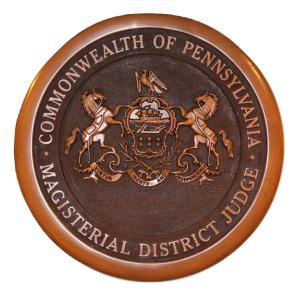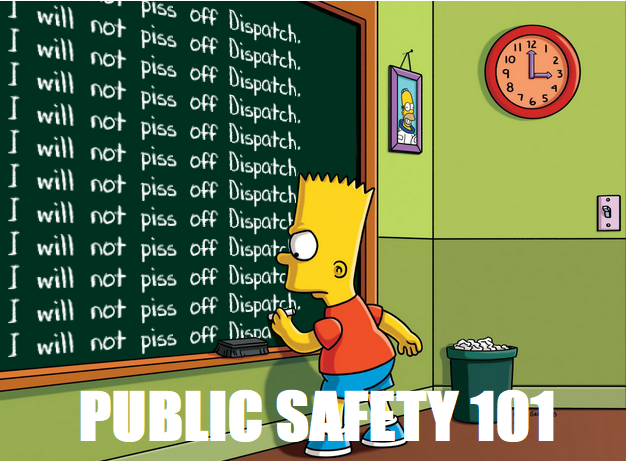(Apologies to Dorothy Parker et al)
With all of the lead-up to the May 16 primary election, I was looking forward to working that morning and coming home afterward so that Leslie and I, as is our past practice, could walk across the street and vote together.
That course of action was compromised on Mother’s Day, with the evening arrival of upper abdominal pain that would not go away. After toughing it out overnight, the decision was made to proceed to the ER at AHN Wexford the following afternoon. After a brief physical and ultrasound, it was quickly determined that my gallbladder was inflamed and possibly infected. With that, I was admitted.
So when I should have been casting my vote in what has been one of the more interesting local primaries in several years, I was having a completely unexpected parting of ways with a minor, reportedly unnecessary organ. Things have since progressed steadily to the resumption of a new normal.
During my convalescence I managed to read a bit about the election results, and have tried to drill down into some areas that haven’t been explored by others. In a general sense, it seems as if some unexpected gains were made in some areas, while in others the battle lines have been fortified and/or clarified for another round come November.
County Races
The successful race run by State Rep. Sara Innamorato for the Democratic nomination for County Executive is another example of successful campaign strategies by progressive factions of the county’s Democratic Party.
 The more moderate “establishment” candidates such as John Weinstein and Michael Lamb, both with lengthy track records in municipal and county governance, assailed Ms. Innamorato for a lack of similar experience. This included attack ads, some directly from the candidates and some from others, which attempted to label Ms. Innamorato as a “socialist“.
The more moderate “establishment” candidates such as John Weinstein and Michael Lamb, both with lengthy track records in municipal and county governance, assailed Ms. Innamorato for a lack of similar experience. This included attack ads, some directly from the candidates and some from others, which attempted to label Ms. Innamorato as a “socialist“.
In the wake of her victory, additional attention has turned toward Joe Rockey, her Republican opponent in November’s general election. Mr. Rockey has labeled himself a “centrist“, presumably in hope of attracting more moderate Democrats and perhaps the tacit support of the Weinstein and Lamb camps.
Mr. Rockey also attempted to paint Ms. Innamorato as being from “the left wing” of the Democratic Party and beholden to a particular labor union for the bulk of her support. Full disclosure – I am a member of that union. Mr. Rockey himself has received the endorsement of at least one union as well.
With all of this posturing and wrangling, what really interested me was Mr. Rockey’s physical resemblance to U.S. Senator Mitt Romney of Utah.
From appearance to similarities in surname and political philosophy, if Mr. Rockey were seeking a Republican politician to emulate he could certainly do worse.
Republicans also factored into another election having repercussions that carry into November. The race for District Attorney will feature County Chief Public Defender Matt Dugan, who defeated long-time incumbent DA Stephen Zappala in the primary, against…Republican nominee Stephen Zappala. Get enough write-in votes and interesting things CAN happen…
Regardless of who wins, there are some serious elephants in the room that will need to be dealt with, beginning with the county jail, and as a consequence the conduct of the county’s criminal justice system.
On a more local note, Sewickley Borough Councilor Todd Hamer won the Democratic nomination for the District 2 seat on Allegheny County Council. District 2 comprises all municipalities in the North Allegheny and Pine-Richland school districts, and all QV municipalities except Glen Osborne, Glenfield, and Haysville.
Mr. Hamer will face incumbent Suzanne Filiaggi (R-Franklin Park) in November.
Magisterial District Judge – The Franklin Park Factor
Along with the countywide emphasis on criminal justice, the Magisterial District Judge is that essential first component of the justice system that brings it to bear for most citizens.
 For at least the last fifty years the District Court for the Quaker Valley area has been located in Leetsdale, and served over that time by only two judges – the late James E. Russo, and the current judge, Robert Ford.
For at least the last fifty years the District Court for the Quaker Valley area has been located in Leetsdale, and served over that time by only two judges – the late James E. Russo, and the current judge, Robert Ford.
Judge Ford is retiring this year. The primary race to elect his replacement was somewhat spirited, with a twist that had a decided effect on the outcome and may impact the court in other ways, depending on the outcome of the general election.
Magisterial District Court 05-3-02 serves not just the 11 Quaker Valley municipalities, but also the borough of Franklin Park. This is significant in that Franklin Park, as of the 2020 census, has about 1,000 more people and about 200 more registered voters than all of the QV municipalities combined – a significant political force in this race if properly leveraged.
Both the Republican and Democratic results appear to reflect the importance of this area to the eventual outcome, along with the quirky nature of one candidacy.
Of the four candidates that sought party nominations, only one, Joseph Bellissimo, is from Franklin Park. Mr. Bellissimo is retired from a lengthy career in law enforcement at the federal level. He is also the only one of the four that did not cross-file for both party ballots, opting to seek only the Republican nomination.
While Glen Sovich made a strong showing in the QV communities, this was overshadowed by Mr. Bellissimo’s dominance in his own backyard. Of his 984 total votes, 780, or nearly 80 percent, came from Franklin Park voters, according to the Allegheny County Elections Division.
 This dominance appears to have been essential to giving Mr. Bellissimo his 115-vote margin of victory over Mr. Sovich.
This dominance appears to have been essential to giving Mr. Bellissimo his 115-vote margin of victory over Mr. Sovich.
Democratic nominee Giuseppe Rosselli, the only attorney in the race, made a balanced showing across the district, with 46.7 percent of his 1575 total votes coming from Franklin Park. This helped him to a comfortable victory over Michael Lepore.
Mr. Rosselli prevailed in 7 of the 9 voting precincts in Franklin Park, possibly owing to a lot of time spent campaigning in the area, along with endorsements such as the one he received from the head of a prominent, family-owned borough business.
Still, one wonders what the outcome of the Democratic race may have been had Mr. Bellissimo cross-filed onto the Democratic ticket as well. This could make for a spirited race in the fall.
I am also including links to some of the information that was disseminated during the primary campaign, for the successful candidates here as well as other local races of note. This may be of interest should the nature and/or tone of the rhetoric from and between the candidates change substantially as the general election approaches.
Rosselli full page ad, Sewickley Herald, May 11, 2023
Leetsdale Candidate Forum, March 30, 2023 – via Sewickley Stream
QV School Board – We’re Just Warmin’ Up, and the Stakes are High
The primary results for the five seats on the Quaker Valley school board were settled along party lines, despite the ability of the candidates to cross-file for this particular office. The “losing” candidates in each race garnered enough votes from voters of the other party to allow speculation that the general election races in at least two regions will be close.
In Region 1, incumbent Gianni Floro received the Democratic nod over Republican William Jasper, who returned the favor by capturing the Republican nomination. Notable in the results is the showing of each candidate in the race that they lost, along with the total number of votes cast – both numbers being pretty close to one another.
Mr. Jasper has not let up since the primary, following up with a postcard mailer sent earlier this month and updating his already robust website with additional information, assertions, and allegations. His concerns about site safety, from secondary access roads to stable soils, bears attention.
While I believe it would be worthwhile to fact check the remainder of Mr. Jasper’s claims, I will reserve that significant task for a later time. I will say that at least one of the claims made on the above flyer has been called into question by those with subject-matter knowledge.
Gianni Floro ad, Herald, May 4, 2023
Gianni Floro ad, Herald, May 11, 2023
QVGOP ad, Herald, April 13, 2023 (All Regions)
Leetsdale Candidate Forum, March 30, 2023 – via Sewickley Stream (Region 1 Candidates only)
Region 2, which consists of just Sewickley Borough, had 4 cross-filed candidates. Incumbent Geoff Barnes and Republican Corinna Garcia-Skorpenske swapped the top two slots for the two respective tickets, all but guaranteeing them election to the two available seats come November.
![]() There were also four candidates in Region 3, the district’s largest. These four chose to pair up, and split the Democratic and Republican nominations along those lines. Melissa (Missy) Walls and Jessica Webster will face John English and George (Bud) Smith for the two seats in November. Both incumbents in Region 3 chose not to seek re-election.
There were also four candidates in Region 3, the district’s largest. These four chose to pair up, and split the Democratic and Republican nominations along those lines. Melissa (Missy) Walls and Jessica Webster will face John English and George (Bud) Smith for the two seats in November. Both incumbents in Region 3 chose not to seek re-election.
Noteworthy from these results is that Ms. Webster and Ms. Walls captured about one-third of the Republican votes, while Mr. English and Mr. Smith received 20 percent of the Democratic votes. A factor in a potentially tight rematch? We’ll see…
Walls / Webster ad, Herald, May 4, 2023
Walls / Webster ad, Herald, May 11, 2023
QVGOP ad, Herald, May 11, 2023 (All Regions)
This upcoming general election for school board is also the closest thing to a referendum on the new high school that voters are likely to see, barring any action required under PA Act 34.
The five seats that are to be decided could constitute a majority of the board when it reorganizes this coming December. Depending upon the outcome, it could be a continued affirmation of the high school project as it is currently evolving, or present an existential threat to the entire project and a pivot toward consideration of options with the existing high school site.
The months ahead promise to be a tense and busy period leading up to November 7. If the last school board election is any indication, the rhetoric and the amount of information presented will ramp up significantly – Mr. Jasper’s body of work may just be the tip of an ever-growing iceberg, with the future of the high school project being the proverbial Titanic if he and his cohort prevail.
This is why I have created an additional page on this site that features much, if not all, of the print advertising regarding the primary election and the high school project. This will hopefully provide a civil baseline of where the candidates stood in May, should the tone of the election somehow become muddied in negative campaign strategies and ad hominem attacks.
There will hopefully be enough time to evaluate and report on what has already been put out there, and what will be forthcoming.
Leet Township Commissioner – High School Review, Divisiveness, Police Chief Controversy
It’s important to remember that while the future of the high school project is being indirectly mulled over by voters, the Leet Township Planning Commission is preparing to consider the district’s plans for the high school site. Sources have stated the latest estimate for that review process to commence is later in the summer, possibly in August. It’s quite conceivable that the process will extend beyond the November election.
How this will affect the upcoming Commissioner election is yet to be seen, but Planning Commission Vice Chair (and former Commissioner) Donna Adipietro was the leading vote-getter in the Democratic primary for three seats, followed by incumbent Martin McDaniel and Kristine Shelton.
 Issues in Leet that I wrote about after the 2021 election continue to influence politics and relationships between government and citizens. These include divisiveness between residents that reside in the Fair Oaks neighborhood along Main Street and Ambridge Avenue and those in the newer, more affluent subdivisions located “on the hill” via Camp Meeting Road. These divisions are mimicked by the township’s two voting districts.
Issues in Leet that I wrote about after the 2021 election continue to influence politics and relationships between government and citizens. These include divisiveness between residents that reside in the Fair Oaks neighborhood along Main Street and Ambridge Avenue and those in the newer, more affluent subdivisions located “on the hill” via Camp Meeting Road. These divisions are mimicked by the township’s two voting districts.
Some of the campaign rhetoric resulted in several Commissioners trying to discredit statements made by Ms. Adipietro on Facebook. This occurred during their regular, public monthly meeting on May 8, and was verified by the township’s audio recording of the meeting, obtained by Ms. Adipietro via a Right to Know Law request.
It would appear that this attempt to publicly castigate Ms. Adipietro had little effect on her primary showing.
It also appears as if the results of the Republican primary for Commissioner may indicate some dissatisfaction with the GOP camp as a whole. Both incumbent Carolyn Verszyla and Katherine Longwell were out-polled by write-in votes for the four Democratic candidates.
Of the 220 write-ins certified by the county elections division, Mr. McDaniel led with 77 Republican votes. He is slated to join Ms. Verszyla and Ms. Longwell on the Republican ballot in November.
Adding to the above controversies is the ongoing fallout concerning last year’s firing of Police Chief Michael Molinaro.
As meticulously reported by the Sewickley Herald beginning in April of last year, this controversy began with an investigation of the Chief that necessitated him being placed on paid administrative leave. One year ago last week Chief Molinaro filed a federal lawsuit over this action prior to being formally terminated (with no public notice) last July.
Review of the case docket and supporting documentation shows both sides trading assertions and rebuttals, a move toward mediation and evaluation of the dispute by a neutral party, and extensions of time to complete discovery.
In April, Chief Molinaro’s attorney filed a motion to withdraw from the case, citing in part “irreconcilable differences“. In a May 18 letter to the court, Chief Molinaro requested termination of the suit, stating that he was in a dispute with his attorney over additional payments. He also alluded to a settlement offer from the township, and that his attorneys had stated they would not represent him further unless he accepted that settlement.
 Chief Molinaro opted instead to focus on his right to appeal his firing before the township’s Civil Service Commission. Hearings related to that appeal were postponed indefinitely in September of last year.
Chief Molinaro opted instead to focus on his right to appeal his firing before the township’s Civil Service Commission. Hearings related to that appeal were postponed indefinitely in September of last year.
In the wake of his declining a settlement offer and dropping the lawsuit, those hearings are set to begin tomorrow, with several future dates already planned in the coming weeks.
Chief Molinaro asserts in part that his termination is politically motivated, and that the reinstatement of an officer he claims to have terminated for cause also has political underpinnings.
In his letter to the court he refers to himself as the “Tentative Police Chief of Leet Twp. (Civil service hearing pending)”, which leads one to believe that reinstatement is his ultimate goal, and could also help to explain why Interim Chief Brian Jameson has yet to be formally given the job.
Based upon public court documents, along with evidence that has been made public record, these hearings could prove quite interesting. The information currently available includes several pieces of evidence obtained via a Right to Know request, after they were ordered released by the state Office of Open Records in response to an appeal filed in January by reporter Jennifer Borrasso of KDKA-TV.
These records include complaints about an officer’s conduct received from the township Manager and others, documentation of that officer’s actions that resulted in supplemental discipline, and written objections to that officer’s reinstatement from not only the Manager, but the police bargaining unit, consisting of all full-time Leet police officers.
Regardless of the outcome of the hearing, the cost to the township of defending the lawsuit could itself prove to be additional fodder for the November elections – even more so if Chief Molinaro prevails.
Even if he had accepted a settlement, the cost to the township for the Commissioners interfering where they likely should not have cannot be ignored.
Too Important to Miss Another
This election stands to potentially change the path of government in many areas within Allegheny County, the Quaker Valley, and beyond. The issues behind choosing which of our neighbors serve as elected officials will have far-lasting effects on the continued viability of governments large and very small, and on our education system as well.
I hope to be able to dig deeper into some of these issues over the next few months. In the meantime, there are other issues to explore, and a personal mandate to get healthier, lest other body parts have any ideas about rebellion.
Within that context I’m certainly glad we Pennsylvanians have the ability to vote by mail.
Have a safe and pleasant summer ahead.






























 The most important piece of equipment is the one that connects the officer to the system that supports their field activities and can rapidly summon additional help if needed – the portable radio.
The most important piece of equipment is the one that connects the officer to the system that supports their field activities and can rapidly summon additional help if needed – the portable radio. 









 In the late 1980s LMPN was purchased and folded into the
In the late 1980s LMPN was purchased and folded into the  Mr. Miller shuttered PINAC at the end of December, citing difficulties encountered with hosting services, government agencies, social media content bots, and a law enforcement community that Mr. Miller felt wanted to punish him for what he and others had helped to bring about. His
Mr. Miller shuttered PINAC at the end of December, citing difficulties encountered with hosting services, government agencies, social media content bots, and a law enforcement community that Mr. Miller felt wanted to punish him for what he and others had helped to bring about. His 

































































